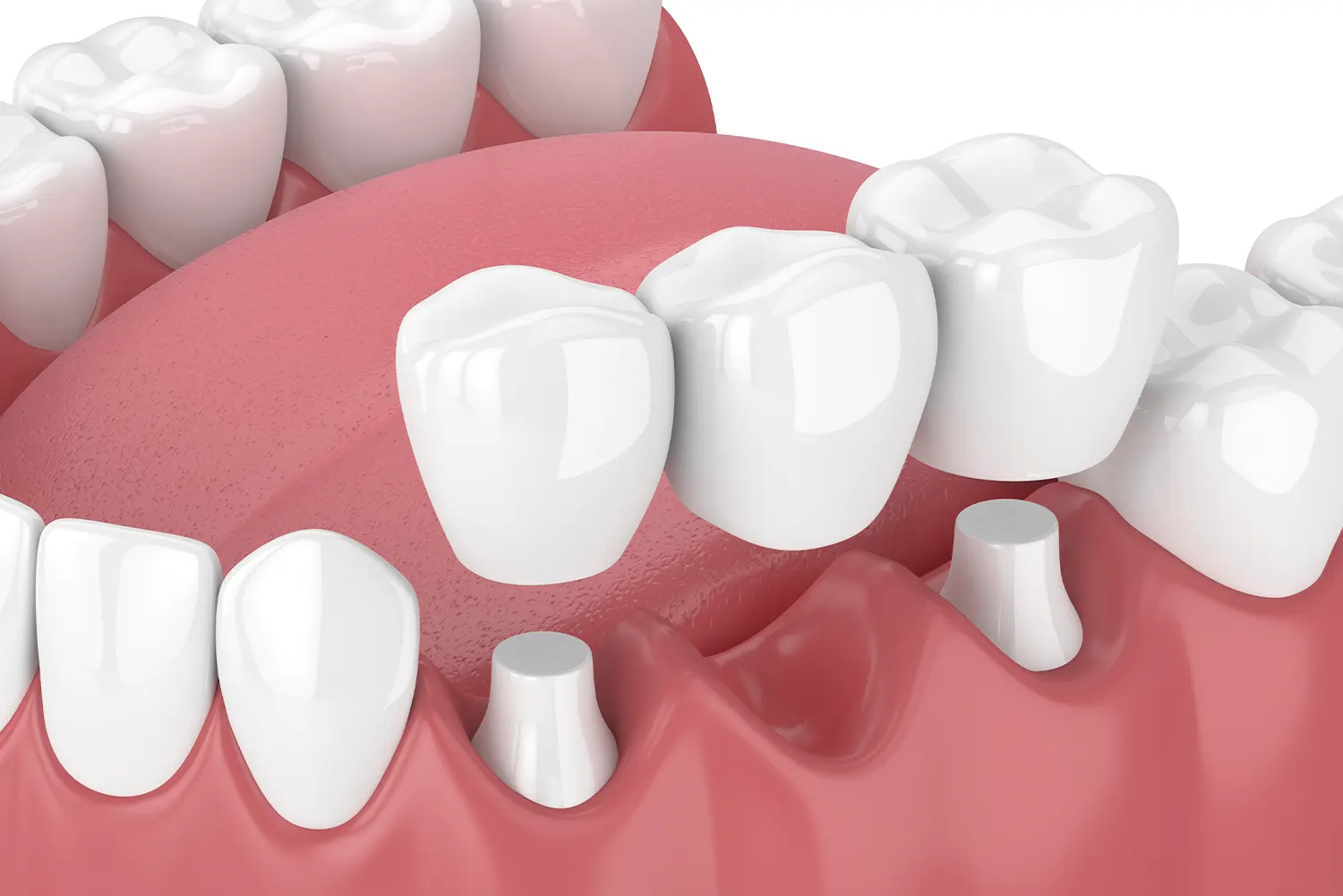
How Are Dental Bridges Attached?
Dental bridges are an innovative solution for those missing one or more teeth, providing not only aesthetic benefits but also restoring functionality. If you've ever wondered how these bridges are securely attached within your mouth, you're not alone.
In this blog, we’ll discuss the fascinating process of how dental bridges are placed, ensuring they blend seamlessly with your natural teeth and offer a durable solution to tooth loss. Join us as we explore the meticulous steps taken by dental professionals to give you a confident and complete smile.
The Basics of Dental Bridges
Dental bridges are prosthetic devices used to fill the gap left by missing teeth. They are typically made up of two or more crowns for the teeth on either side of the gap, known as abutment teeth, with a false tooth or teeth (pontic) suspended in between them. Bridges are typically made from ceramic materials, but occasionally incorporate some metal components. When considering dental bridges, it's important to understand the types available:
- Traditional Bridges: The most common type, involving crowns on either side of the missing tooth or teeth.
- Cantilever Bridges: Used when there are adjacent teeth on only one side of the missing tooth or teeth.
- Maryland Bonded Bridges: Also known as a resin-bonded bridge, it uses a metal or porcelain framework bonded to the back of adjacent teeth.
- Implant-Supported Bridges: These are supported by dental implants rather than crowns or frameworks.
The Process of Attaching Dental Bridges
The attachment of dental bridges is a multi-step process that requires precision and expertise. Here’s how your dentist ensures a perfect fit:
- Initial Consultation: Your dentist will assess your oral health and determine the best type of bridge for your needs.
- Preparation of Abutment Teeth: The dentist will reshape the abutment teeth by removing a portion of enamel to accommodate the crowns.
- Impression Taking: An impression of your teeth is taken to create a model for your final dental bridge.
- Temporary Bridge Placement: While your permanent bridge is being made, a temporary bridge will protect the exposed teeth and gums.
Fitting and Adjusting the Dental Bridge
Once your permanent bridge is ready, you will return to the dental office for fitting. During this appointment, your dentist will:
- Remove the Temporary Bridge: Carefully take out the temporary bridge and clean the area.
- Check the Fit and Bite: Ensure the bridge fits well and aligns properly with your bite. Adjustments may be made to achieve a perfect fit.
- Permanently Cement the Bridge: Once satisfied with the fit, your dentist will cement the bridge in place using powerful dental cement.
This careful process ensures the bridge is both secure and comfortable, allowing you to enjoy your restored smile with confidence.
Maintaining Your Dental Bridge
Proper care and maintenance of your dental bridge are crucial to its longevity. Here are some tips to keep your bridge in optimal condition:
- Practice Good Oral Hygiene: Brush twice daily and floss to remove plaque and debris around the bridge.
- Regular Dental Checkups: Visit your dentist regularly for cleanings and checkups to monitor the health of your bridge and surrounding teeth.
- Avoid Hard Foods: Refrain from biting down on hard foods like ice or hard candies to prevent damage.
- Use a Bridge Flosser: Special tools like a bridge flosser can help clean underneath the pontic and around the abutment teeth.
Schedule Your Consultation in Lubbock, TX
If you're considering a dental bridge or have questions about your oral health, the Epperson Payne Dental Group in Lubbock, TX, is here to help. Our experienced team of dental professionals is dedicated to providing personalized care and ensuring your smile is both beautiful and functional. Don't wait to restore your confidence and oral health. Contact us today at (806) 777-9991 to schedule your consultation and take the first step towards a brighter smile.
Related Posts
Lorem ipsum dolor sit amet, consectetur adipiscing elit.

How Are Dental Bridges Attached?
Dental bridges are an innovative solution for those missing one or more teeth, providing not only aesthetic benefits but also restoring functionality.

The Complete Guide to Getting a Tooth Implant
Are you considering a tooth implant but unsure of where to start? You're not alone.

Dental Implants in Lubbock, TX: Your Path to a Confident Smile
Restore your smile with dental implants at Epperson Payne Dental Group in Lubbock, TX. Achieve lasting confidence and function with expert implant care!

